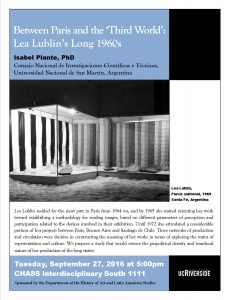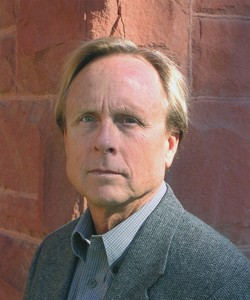 Between Paris and the ‘Third World’: Lea Lublin’s Long 1960s
Between Paris and the ‘Third World’: Lea Lublin’s Long 1960s
Isabel Plante, PhD
Consejo Nacional de Investigaciones Científicas y Técnicas,
Universidad Nacional de San Martín, Argentina
Lea Lublin resided for the most part in Paris from 1964 on, and by 1965 she started orienting her work toward establishing a methodology for reading images, based on different parameters of perception and participation related to the devices involved in their exhibition. Until 1972 she articulated a considerable portion of her projects between Paris, Buenos Aires and Santiago de Chile. These networks of production and circulation were decisive in constructing the meaning of her works in terms of exploring the status of representation and culture. We propose a study that would restore the geopolitical density and translocal nature of her production of the long sixties.

 Dr. Rudolph is an art historian whose research focuses on the art of Medieval Europe, with special attention to the role of visual expression in the articulation of intellectual and theological concepts, and their dissemination into the broader culture. As a medievalist, Rudolph’s work is lauded not only for its historical rigor, but also for its conceptual daring and theoretical sophistication. Rudolph is known to be a scholar who fearlessly asks the big questions. He also possesses the rare gift of being able to make complex and historically distant imagery clear and compelling to a twenty-first century audiences.
Dr. Rudolph is an art historian whose research focuses on the art of Medieval Europe, with special attention to the role of visual expression in the articulation of intellectual and theological concepts, and their dissemination into the broader culture. As a medievalist, Rudolph’s work is lauded not only for its historical rigor, but also for its conceptual daring and theoretical sophistication. Rudolph is known to be a scholar who fearlessly asks the big questions. He also possesses the rare gift of being able to make complex and historically distant imagery clear and compelling to a twenty-first century audiences. June 10, 2016-January 28, 2017
June 10, 2016-January 28, 2017
 ABOUT THE SYMPOSIUM
ABOUT THE SYMPOSIUM Dr. Steffen Siegel, Folkswang Universität der Künste
Dr. Steffen Siegel, Folkswang Universität der Künste